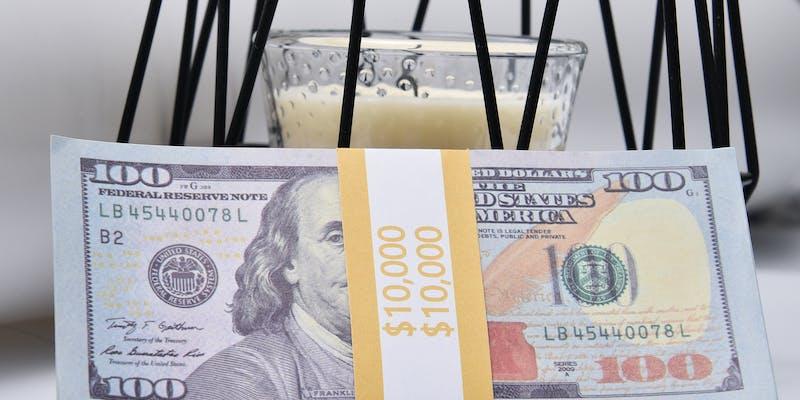The collapse of Silicon Valley Bank on March 10 required intervention from the FDIC to ensure depositors' funds were accessible. Bank deposit security and use are questioned after this event. Banking intermediaries move funds from depositors to borrowers. Deposits are used for loans and investments by banks.
This process is more complicated. Financial institutions must hold a portion of cash receipts. They can also distribute the remaining funds through loans and securities. To understand banks and protect your deposits, you must understand this mechanism. Banking operations are complex, but this concise summary emphasizes the balance between reserves and credit.
The Procedure For Lending By Banks
The money you deposit at a bank is not all cash. Most of your deposit goes to bank profits. Your funds are used to lend, invest in government bonds, or issue credit cards by the bank. Borrowers must repay the bank with interest. We call this financial intermediation.
Borrowers pay higher interest rates than depositors, so banks make money. Suppose you deposit $500 into a 4% savings account. The bank will give you $20 after a year. The bank may use $400 from your funds to give someone a 10% personal loan.
This loan earns the bank $40 annually. The bank keeps $20 as a profit after receiving $20 in interest. The bank's shareholders receive this profit. Besides consumer and business loans, banks also invest deposit money in other ways, like buying Treasury bonds.
These bonds are essentially loans to the government, which pays interest to the bank in return—in late 2021, the New York Times reported that banks bought more Treasury bonds. This was because they had more deposited money, and few people wanted to borrow. Investing in these bonds was a way for banks to keep making money from the bank money market rates.
Where Do Banks Get Money?

You don't control how the bank allocates your deposits. However, if you value the destination of your bank funds, especially about your personal beliefs, there are ways to find out and choose.
If you care about the environment, choose a bank that invests in green projects rather than fossil fuels. Find a B-Corp or GABV-certified bank that values environmental sustainability. These certifications require the bank to meet ecological standards.
Mighty Deposits is another valuable tool in this regard. It's a database that gathers public information about how banks use their deposits. You can search for a specific bank on Mighty Deposits for details on their investment areas. Alternatively, if you're interested in supporting a particular cause, like small business lending, you can search for banks excelling in that area.
Choosing a bank that invests your deposits in sectors you care about can be a powerful way to make a difference. By using tools and certifications like B-Corp, GABV, and Mighty Deposits, you can ensure that your bank money is being used in a way that aligns with your ethical and environmental values.
How Much Cash Reserves Are Necessary For Banks?
The Federal Reserve, the central authority overseeing banks in the United States, has established rules for banks to maintain liquid assets, known as cash reserves. These reserves are essential for banks to fulfill customer withdrawals.
Notably, as of March 26, 2020, a significant change occurred when the Federal Reserve removed the requirement for banks to hold a specified amount of cash reserves. This development means banks are no longer mandated to keep a particular portion of customer deposits in cash form. Despite this, banks often retain some cash to manage withdrawals efficiently.
This adjustment in reserve requirements reflects a shift in how banks manage their money in the bank, affecting bank money market rates. Banks can offer different bank money market rates without the obligation to hold a fixed amount of cash.
Yet, the core principle remains: ensuring enough bank money is available to meet withdrawal demands. The absence of a mandatory cash reserve ratio offers banks more leeway in managing their financial resources, balancing the need to provide immediate cash for withdrawals with the desire to earn returns on their assets.
Consequences Of A Bank's Inability To Meet Demand With Cash
Banks operate by lending out a significant portion of the deposits they receive, meaning the total balance in your account isn’t always available in physical cash. When customers withdraw funds, banks utilize their cash reserves. Banks might sell off securities to cover the withdrawals when these reserves are insufficient.
Occasionally, many customers withdraw their funds at once, depleting the bank's reserves. This is called a bank run and can cause bank failures. Silicon Valley Bank's demise is an example. SVB invested heavily in Treasury bonds. Due to factors like Federal Reserve interest rate hikes lowering bond values, SVB had to sell many of these bonds at a loss of $1.8 billion.
After this significant loss, depositors withdrew their funds, leaving SVB unable to meet all withdrawal requests. When a bank lacks cash, regulators intervene. The FDIC acquired the bank's assets after its closure. This is typical when a bank's reserves are insufficient to meet customer demand, affecting money market rates.
Free Checking Account Profits for Banks

Banks, like other businesses, aim to make money. Free checking accounts are a profit-making strategy. They use this method:
1. Savings from Deposits
Banks need significant funds to lend to borrowers. They use your deposits instead of high-cost external borrowing. Due to its lower cost, this choice benefits them. Your bank deposits help them lend cheaply.
2. Earning More from Loans Than They Pay You
While some checking accounts pay interest, it's usually lower than the bank charges for loans and overdrafts.
This difference in interest rates is critical. For instance, the bank might pay you 1% interest on your deposit but charge 5% on a loan. This spread between the bank money market rates they earn and what they pay you adds up to profit.
3. Charges
Additional income comes from various fees. They'll charge you if you exceed your account limit or try to make a transaction without enough money in the bank. Overdraft fees or penalties for insufficient funds are common ways banks make money. These fees can be a significant revenue stream for them.




